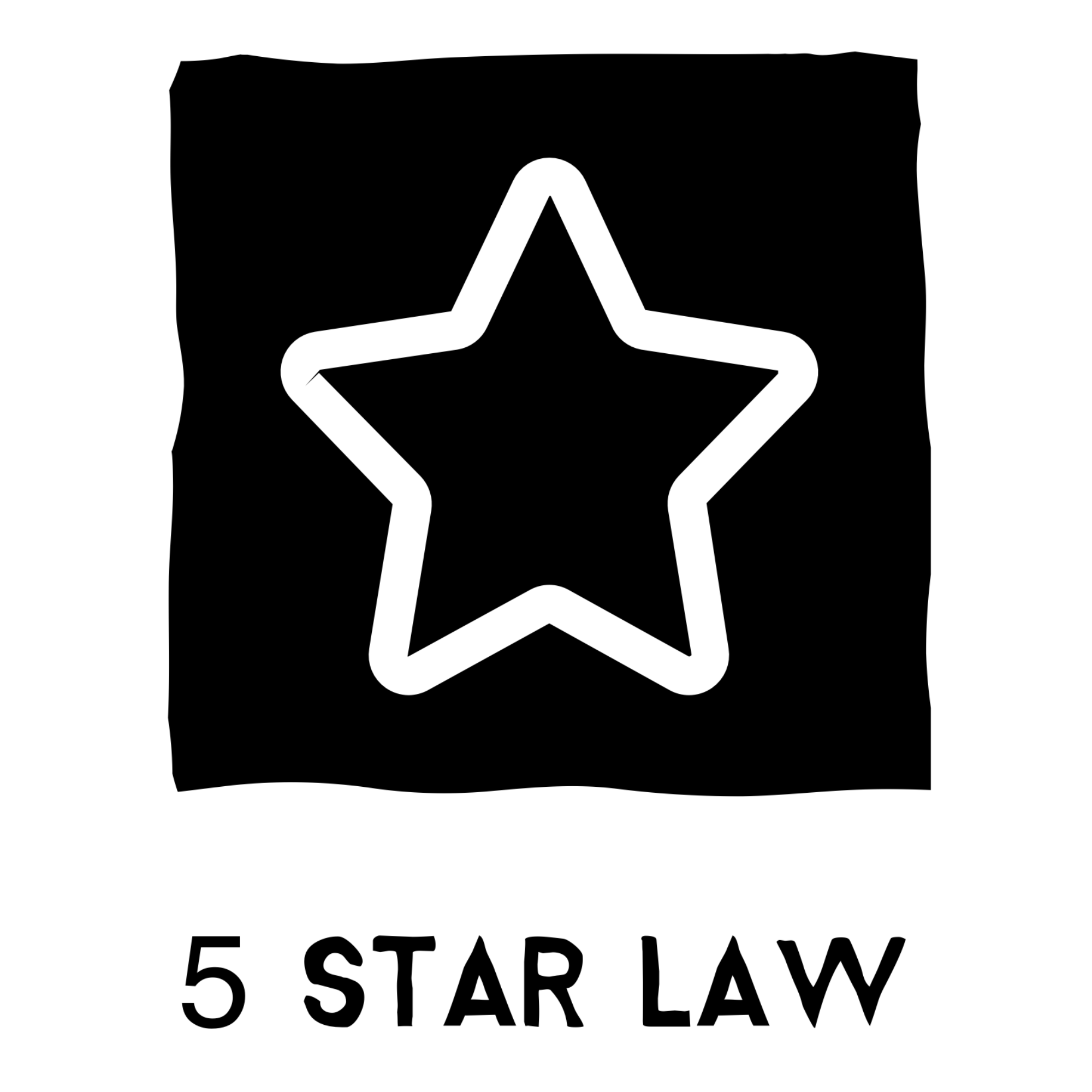Employment Law: A Comprehensive Guide
Did you know that over 60% of Americans know their rights and responsibilities under employment law, including specific jobs, minimum wages, federal minimum, and unions? In a constantly evolving workplace, understanding the ins and outs of employment law, for example, how it administers specific jobs or deals with union issues, has never been more crucial.
Whether you're an employee wondering about your rights or an employer trying to navigate the complexities of labor regulations, including health standards, this post, administered by employment attorneys, is your go-to guide. We'll break down the basics of employment law in a way that's easy to grasp, covering everything from contracts and wages to discrimination and termination, including how it administers these aspects.
Thanks to insights from employment attorneys, you'll be not only more informed but also empowered to handle workplace issues confidently by the end.
Table Of Contents
Purpose and Scope of Employment Laws
Labour Mediation
Labor laws, often navigated by employment attorneys, serve as the mediator between various parties in the workplace. They create a balanced relationship among workers, employers, unions, and governments. This intricate balance ensures that no party holds too much power over another, fostering a fair work environment.
Employment laws are crucial for protecting workers from unfair practices. They ensure that employees receive fair pay for their labor and prohibit discrimination, making the workplace more inclusive.
Collective Law
The collective aspect of labor law focuses on the tripartite relationship between employees, employers, and unions. It sets the groundwork for negotiating wages, work hours, and other critical employment terms. This collective bargaining process is essential for maintaining harmony in the workplace.
It empowers employees to have a say in their working conditions. Through unions, workers can negotiate better terms collectively than they might individually.
Individual Law
Individual labor law focuses on employees' rights at work through their work contracts. It covers various issues, such as job security, leave entitlements, and protection against wrongful termination. These standards ensure that each worker is treated fairly and with respect.
Employment standards act as social norms by setting minimum acceptable work conditions. They safeguard employees' well-being and dignity in the workplace.
Standards Enforcement
Government agencies play a pivotal role in enforcing labor law. They ensure compliance with employment standards and address violations when they occur, which is vital for maintaining justice in the workplace.
These agencies provide a recourse for employees who face unfair treatment at work. They help to resolve disputes between employers and employees efficiently.
Fundamentals of Employment Discrimination Laws
Legal Frameworks
Employment discrimination laws ensure that all employees and job applicants have equal access to opportunities without bias toward their race, gender, age, disability, or other protected characteristics. These laws create a foundation for fairness in the workplace.
The Civil Rights Act, especially Title VII, prohibits employment discrimination based on race, color, religion, sex, or national origin. It was a groundbreaking piece of legislation when it was passed in 1964. This act made it illegal for employers to make hiring or firing decisions based on these characteristics.
Another cornerstone is the Americans with Disabilities Act (ADA). Passed in 1990, the ADA requires employers to provide reasonable accommodations for employees with disabilities and prohibits discrimination against these individuals in all areas of employment.
Equal Opportunity
Ensuring equal opportunity in hiring, promotion, and termination decisions is not just a legal requirement but also a moral imperative for businesses. It fosters an inclusive environment where talent thrives regardless of background.
Companies must implement transparent recruitment and advancement procedures. This includes clear job descriptions, objective performance evaluations, and fair grievance mechanisms. By doing so, they comply with the law, enhance their reputation, and attract diverse candidates.
Key Legislation
Several pieces of key legislation underpin the fight against employment discrimination. Apart from the Civil Rights Act and the ADA mentioned earlier:
- The Age Discrimination in Employment Act (ADEA) protects workers aged 40 and older from discrimination.
- The Equal Pay Act requires men and women in the same workplace to be given equal pay for equal work.
- The Pregnancy Discrimination Act forbids discrimination based on pregnancy when it comes to any aspect of employment.
These laws collectively ensure that employment decisions are made based on merit and qualifications rather than personal characteristics unrelated to job performance.

Protecting Employees from Discrimination
Filing Complaints
Employees who believe they have been wronged must file a discrimination complaint. They must first contact the Equal Employment Opportunity Commission (EEOC), which usually needs to be done within 180 days of the incident.
Employees should prepare all relevant information before contacting the EEOC. This includes the dates of discriminatory acts, details about the incidents, and any witnesses. The EEOC then reviews the complaint and decides on the next steps, which may include mediation or a full investigation.
Retaliation Protections
One key aspect of employment law is protecting employees from retaliation. This means if someone reports discrimination, their employer cannot punish them for it. Examples of retaliation include demotion, salary reduction, or job termination.
The laws clearly state that protection against retaliation is strong. Employees can feel safer speaking up about unfair treatment, essential for maintaining a fair workplace environment.
Workplace Accommodations
Employees with disabilities often require adjustments in their work environment. Examples include special software, flexible working hours, or ergonomic furniture.
Employers must provide reasonable accommodations unless doing so causes undue hardship. This ensures that all employees have equal opportunities to succeed in their roles. It demonstrates a commitment to inclusivity and diversity within the workplace.
Understanding Unemployment Compensation
Eligibility Criteria
To qualify for unemployment benefits, individuals must meet specific criteria. They must have lost their job through no fault of their own. This means layoffs due to company downsizing or closures are covered, but quitting without a good reason or being fired for misconduct are not.
Applicants must also demonstrate they are actively seeking employment. This involves regularly applying for jobs and sometimes participating in training sessions or workshops offered by unemployment agencies.
Application Process
Applying for unemployment compensation begins with contacting your state's unemployment office. This can often be done online, over the phone, or in person. You must provide personal information, details about your previous employment, and reasons for job loss.
After applying, there is usually a waiting period while your claim is reviewed. If approved, you will receive a notification on how to claim your weekly benefits.
Benefit Details
Unemployment benefits vary by state but typically replace a portion of the worker's previous income. The amount received depends on past earnings and the maximum limit set by the state.
Benefits are usually available for up to 26 weeks, although extensions may be granted during high unemployment rates. Meeting eligibility requirements throughout this period is crucial to maintaining benefit access.
Navigating Unemployment Benefits
Eligibility Maintenance
Maintaining eligibility for unemployment benefits requires understanding and meeting specific criteria. States administer these programs, each with its own set of rules. However, common among them is the necessity for claimants to actively seek employment.
It's vital to keep a detailed record of job search activities. This can include applications sent, interviews attended, and networking efforts. Many states require a certain number of job search actions per week. Failure to meet these requirements can result in a suspension of benefits.
Part-time work does not necessarily disqualify one from receiving unemployment benefits. However, it can affect the benefit amount. The key is to report all earnings when certifying weekly benefits accurately. This honesty ensures compliance and avoids potential overpayment issues.
Freelance Income Impact
Freelance work has become more common but complicates unemployment claims. Income from freelance gigs must also be reported and factored into your weekly benefit amount.
The calculation method varies by state but generally involves deducting a portion of freelance earnings from your benefit payment. Understanding these rules is crucial to avoiding surprises in your benefit amounts.
Appeal Process
Denied unemployment claims are not the end of the road. An appeal process is in place for such instances. The first step is to review the denial letter carefully, as it outlines the reason(s) for the denial and provides information on how to file an appeal.
Filing an appeal typically involves submitting a written request within a specified timeframe after receiving the denial notice. It's essential to include any additional information or documentation that supports your eligibility.
The appeal process often includes a hearing in person or by phone, where the claimant and the employer can present evidence and arguments. Preparation and organization are crucial to delivering a solid case.
Employment Law Compliance for Employers
Wage Laws
Employers must understand federal and state wage laws. They dictate the minimum salary employees should receive. This includes overtime pay. The federal minimum wage acts as the baseline. Yet, many states have set higher rates.
Companies must adhere to these standards. Failure to do so can lead to hefty fines and legal disputes. Regular audits ensure compliance with these evolving regulations.
Anti-Discrimination
Workplaces must be free from discrimination. Laws protect employees from unfair treatment based on race, gender, religion, etc. Employers should implement policies that promote equality.
Training sessions can help staff recognize and prevent discriminatory behavior. A transparent grievance reporting system is also essential. It shows a commitment to a fair and inclusive environment.
Workplace Safety
Safety regulations protect workers from harm. Employers are responsible for providing a safe working environment. This covers everything from proper equipment to emergency protocols.
Regular safety training and inspections reduce the risks of accidents. Non-compliance not only endangers lives but also exposes companies to legal action.
Inclusive Culture
Creating an inclusive workplace goes beyond legal compliance. It involves fostering a culture where all employees feel valued and respected.
Encouraging open dialogue about diversity and inclusion is critical. So is recognizing and celebrating differences among staff members. These efforts boost morale and productivity.
Consequences of Non-Compliance
Non-compliance with employment law can have serious consequences. Fines, lawsuits, and damage to reputation are expected outcomes.
Companies may face investigations by government agencies,b too. These can disrupt business operations significantly.
Rights and Obligations Under Employment Law
Employee RightsEmployees have the right to fair labor practices.
This includes receiving minimum wages as mandated by law for their jobs. It ensures that individuals are compensated fairly for their work, especially in specific high-demand jobs.
They also deserve safe working conditions. Laws exist to protect employees from hazardous environments, and employers have this obligation and must adhere to safety standards and regulations.
Freedom from discrimination is another pivotal right. Employment laws prohibit discrimination based on race, gender, age, or religion in the workplace, fostering an inclusive environment where every person can thrive.
Employer Obligations
Employers are responsible for complying with employment laws and ensuring their practices do not violate employee rights. This includes paying the correct wages and providing a safe work environment.
They are also tasked with protecting employee rights against discrimination and harassment. Employers must take immediate action upon any complaints to maintain a respectful relationship.
Employers should be transparent about job responsibilities and provisions during hiring. Miscommunication can lead to disputes which harm both parties' interests.
Employment Contracts
Employment contracts serve as the foundation of the employee-employer relationship. They outline the terms of employment, including job responsibilities, salary, and termination clauses. These documents are crucial for clarity and preventing misunderstandings.
Contracts also detail what is expected from both sides, establishing a clear set of obligations and rights. This mutual understanding helps build a strong working relationship between employers and employees.
Unions often negotiate these contracts for their members to ensure fair treatment and benefits. Their involvement emphasizes the importance of collective bargaining in maintaining balanced employment relationships.

Impact of Employment Laws on Workplace Dynamics
Equitable Environment
Employment laws play a crucial role in creating an equitable work environment. They ensure fair treatment for all employees, regardless of their background or position. These laws protect workers from discrimination and harassment, fostering a culture of respect.
By setting clear guidelines, they help resolve disputes fairly. This benefits employees and employers, leading to a more harmonious workplace. A respectful atmosphere boosts morale and productivity, benefiting the entire organization.
Diversity Promotion
Employment laws are pivotal in promoting diversity and inclusion in the workplace. They require organizations to adopt non-discriminatory hiring practices, which pushes companies to broaden their talent search and embrace diverse backgrounds and perspectives.
Such diversity enriches the workplace culture, sparking creativity and innovation. It helps businesses understand and cater to a broader range of customers. Employment laws don't just advocate for fairness; they drive business success by championing diversity.
Challenge Navigation
However, implementing employment laws is not without its challenges. Conflicts can arise when employees feel these laws impede their freedom or when misunderstandings occur regarding legal obligations. Training and clear communication are essential in overcoming these obstacles.
Moreover, adapting to new regulations can be costly for small businesses, especially tiny ones. Yet, the long-term benefits of a well-regulated workplace often outweigh these initial hurdles. Through careful planning and open dialogue, most challenges can be navigated successfully.
Future Trends in Employment Legislation
Remote Work
The rise of remote work is reshaping employment law. Many states and the federal government are considering new regulations to address this shift. These laws may focus on health standards for home offices and fair compensation for remote employees.
Remote work blurs traditional boundaries, requiring precise working hours and overtime pay guidelines. Employers might need to ensure that home offices meet specific safety standards. They also must consider managing team dynamics when some members work remotely.
Gig Economy
The gig economy challenges existing employment frameworks. Many workers now operate as freelancers or independent contractors. This trend could push lawmakers to redefine what it means to be an employee.
Gig workers often lack access to benefits like health insurance or paid leave. The federal government and many states are debating laws to provide these workers with more protections. Such changes would ensure fair treatment across all types of employment.
Technology Impact
Emerging technology, including automation, is transforming workplaces. Legislative responses may include training programs for displaced workers and regulations on new technologies.
Automation can increase efficiency but also raises concerns about job displacement. Lawmakers are considering ways to support workers who lose their jobs to machines. This might include funding retraining programs or incentives for companies that hire human employees over automated systems.
LGBTQ+ Rights
Expanding protections for LGBTQ+ employees is a key focus area in employment law debates. Many states are moving ahead with legislation that prohibits discrimination based on sexual orientation or gender identity.
These protections aim to create a more inclusive workplace environment. They ensure that all employees, regardless of their LGBTQ+ status, have equal opportunities and rights at work.
Wage Gaps
Addressing wage gaps remains a pressing issue in employment legislation. Efforts are underway at state and federal levels to ensure equal pay for equal work, regardless of gender, race, or ethnicity.
Legislation to close the wage gap includes transparency requirements for employers and stricter penalties for violations. These measures seek to eliminate systemic pay disparities and promote fairness in compensation practices.
Summary
Employment law shapes the backbone of the workplace, safeguarding your rights and ensuring fair treatment. From understanding the fundamentals of discrimination laws to navigating unemployment benefits and compliance, it's clear that staying informed is critical to protecting yourself and fostering a positive work environment. Employment laws are not just rules but tools that help balance the scales in the labor market, promoting equality and preventing unfair practices.
As we look ahead, staying abreast of future trends in employment legislation will be crucial for both employees and employers. Whether you're advocating for your rights or ensuring your business meets legal standards, knowledge is power. Dive deeper into employment law, arm yourself with information, and take proactive steps towards a more equitable workplace. Remember, your awareness and action can drive change. Ready to empower yourself further? Explore more resources and stay informed.
Frequently Asked Questions
What is the purpose of employment laws?
Employment laws are designed to protect employees and employers by setting standards for workplace safety, discrimination, wages, and benefits. They ensure fair treatment and equality in the workforce.
How do employment discrimination laws protect employees?
These laws prohibit discrimination based on race, gender, religion, national origin, physical or mental disability, and age and ensure that every individual has an equal opportunity for employment and advancement.
What rights do employees have under employment law?
Employees have rights to fair wages, safe working conditions, freedom from discrimination, and the ability to address grievances against employers. Employment law outlines these rights to protect workers from unfair practices.
How can employers comply with employment law?
Employers must follow regulations regarding wages, hours worked, non-discrimination policies, and workplace safety. Regular training and audits can help maintain compliance and avoid legal issues.
What impact do employment laws have on workplace dynamics?
Employment laws create a more equitable work environment by ensuring fairness and respect. This can improve morale, increase productivity, and reduce employee turnover rates.
What are future trends in employment legislation likely to focus on specific jobs, employee relationships, minimum wages, and state laws?
Future trends may include greater emphasis on remote work policies, enhanced employee data protection, stricter anti-discrimination measures, and updates to labor standards reflecting technological advancements in the workplace.
Related Post
Employment Lawyers
Did you know that many workers face unfair treatment at work? Still, only a fraction reach out to employment lawyers for help with employee rights, company policies, and information on professionalism.
Read MoreSexual Harassment Lawyer
Ever felt cornered with nowhere to turn after facing sexual harassment as an employee victim, enduring harassing conduct from a harasser that created a hostile work environment?
Read MoreImmigration Law
Immigration law, a complex web of issues including naturalization that has evolved significantly over centuries, is one of the most discussed topics worldwide, particularly in the United States, affecting numerous persons.
Read MoreDiscrimination Lawyer
Over 70% of people have faced some form of discrimination at work but didn't know where to turn for claims.
Read MoreWrongful Termination Lawyer
Over 70% of employees have felt they were wrongfully terminated for unlawful or discriminatory reasons or due to medical leave or intolerable working conditions.
Read MorePersonal Injury Law
Navigating the complexities of personal injury law, court decisions, and alternative dispute resolution can feel like trying to find your way out of a labyrinth without a map for the injured party, emphasizing the importance of reasonable care.
Read More






